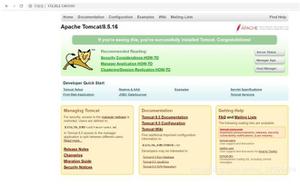用UIView绘制渐变画()用swift
我想在所有视图中放入渐变背景。用UIView绘制渐变画()用swift
我认为这样做的方式不需要在所有视图控制器中创建视图的IBOutlet,就是从UIView创建一个新类,然后在draw()中放入使CAGradientLayer成为代码的代码风景。
因此,在界面生成器中,我只需要选择背景视图并将其类设置为我的自定义类。它到目前为止工作。
我的问题是如果我可以做到这一点没有问题。有人知道可以吗? 因为从UIView继承的模型文件附带注释: //如果执行自定义绘图,则只能覆盖draw()。
而且我不知道是否创建图层数量。或者,如果draw()仅适用于低级绘图或类似的东西。对draw()函数的最佳用法一无所知。
这是代码:
override func draw(_ rect: CGRect) { let layer = CAGradientLayer()
layer.frame = CGRect(x: 0, y: 0, width: self.frame.width, height: self.frame.height)
let color1 = UIColor(red: 4/255, green: 39/255, blue: 105/255, alpha: 1)
let color2 = UIColor(red: 1/255, green: 91/255, blue: 168/255, alpha: 1)
layer.colors = [color1.cgColor, color2.cgColor]
self.layer.addSublayer(layer)
}
回答:
想,你可以使用@IBDesignable和@IBInspectable配置从故事板startColor和ENDCOLOR属性,你可以有尽可能多的颜色。如果要绘制draw(_ rect :)方法,请使用CGGradient指定颜色和位置,而不是CAGradientLayer。简单渐变类和draw(_ rect: CGRect)功能看起来像这样
import UIKit @IBDesignable class GradientView: UIView {
@IBInspectable var startColor: UIColor = UIColor(red: 4/255, green: 39/255, blue: 105/255, alpha: 1)
@IBInspectable var endColor: UIColor = UIColor(red: 1/255, green: 91/255, blue: 168/255, alpha: 1)
override func draw(_ rect: CGRect) {
let context = UIGraphicsGetCurrentContext()!
let colors = [startColor.cgColor, endColor.cgColor]
let colorSpace = CGColorSpaceCreateDeviceRGB()
let colorLocations: [CGFloat] = [0.0, 1.0]
let gradient = CGGradient(colorsSpace: colorSpace,
colors: colors as CFArray,
locations: colorLocations)!
let startPoint = CGPoint.zero
let endPoint = CGPoint(x: 0, y: bounds.height)
context.drawLinearGradient(gradient,
start: startPoint,
end: endPoint,
options: [])
}
}
它here和tutorial
回答:
你不应该添加一个CAGradientLayer的draw函数内。
如果你想一个梯度添加到视图那么最简单的方法是用层做(比如你正在做的),但不喜欢这个......
你应该把它添加到您的视图init方法的一部分,然后在布局子视图方法中更新其框架。
事情是这样的......
class MyView: UIView { let gradientLayer: CAGradientLayer = {
let l = CAGradientLayer()
let color1 = UIColor(red: 4/255, green: 39/255, blue: 105/255, alpha: 1)
let color2 = UIColor(red: 1/255, green: 91/255, blue: 168/255, alpha: 1)
l.colors = [color1.cgColor, color2.cgColor]
return l
}()
override init(frame: CGRect) {
super.init(frame: frame)
layer.addSublayer(gradientLayer)
}
override func layoutSubviews() {
super.layoutSubviews()
gradientLayer.frame = bounds
}
}
回答:
我想创建的UIView延伸并在需要时使用它。
extension UIView { func withGradienBackground(color1: UIColor, color2: UIColor, color3: UIColor, color4: UIColor) {
let layerGradient = CAGradientLayer()
layerGradient.colors = [color1.cgColor, color2.cgColor, color3.cgColor, color4.cgColor]
layerGradient.frame = bounds
layerGradient.startPoint = CGPoint(x: 1.5, y: 1.5)
layerGradient.endPoint = CGPoint(x: 0.0, y: 0.0)
layerGradient.locations = [0.0, 0.3, 0.4, 1.0]
layer.insertSublayer(layerGradient, at: 0)
}
}
在这里,您可以更改FUNC声明指定为startPoint,endPoint和locations PARAMS作为变量。
之后,只需调用这个方法就像
gradienView.withGradienBackground(color1: UIColor.green, color2: UIColor.red, color3: UIColor.blue, color4: UIColor.white) 附: 请注意,您在colors阵列
以上是 用UIView绘制渐变画()用swift 的全部内容, 来源链接: utcz.com/qa/263557.html








